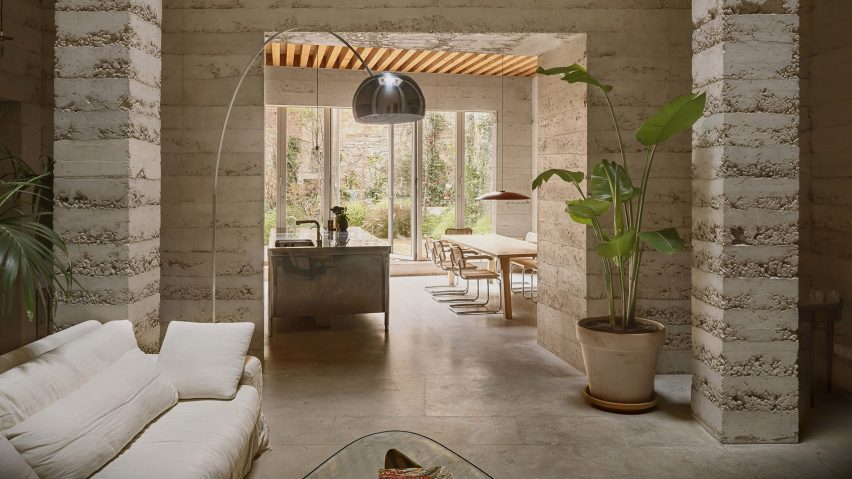
Textured layers of poured concrete enclose Barcelona home by H Arquitectes
Spanish studio H Arquitectes has completed Casa 1736, a house in Barcelona with "robust and monolithic" walls formed of tactile poured concrete.
The challenge of the design was to provide the three-storey home with sufficient ventilation and daylight, due to its deep plot bordered by neighbouring buildings.
To achieve this, H Arquitectes created a skylit, triple-height atrium at the home's centre that is framed by concrete columns and balconies above.
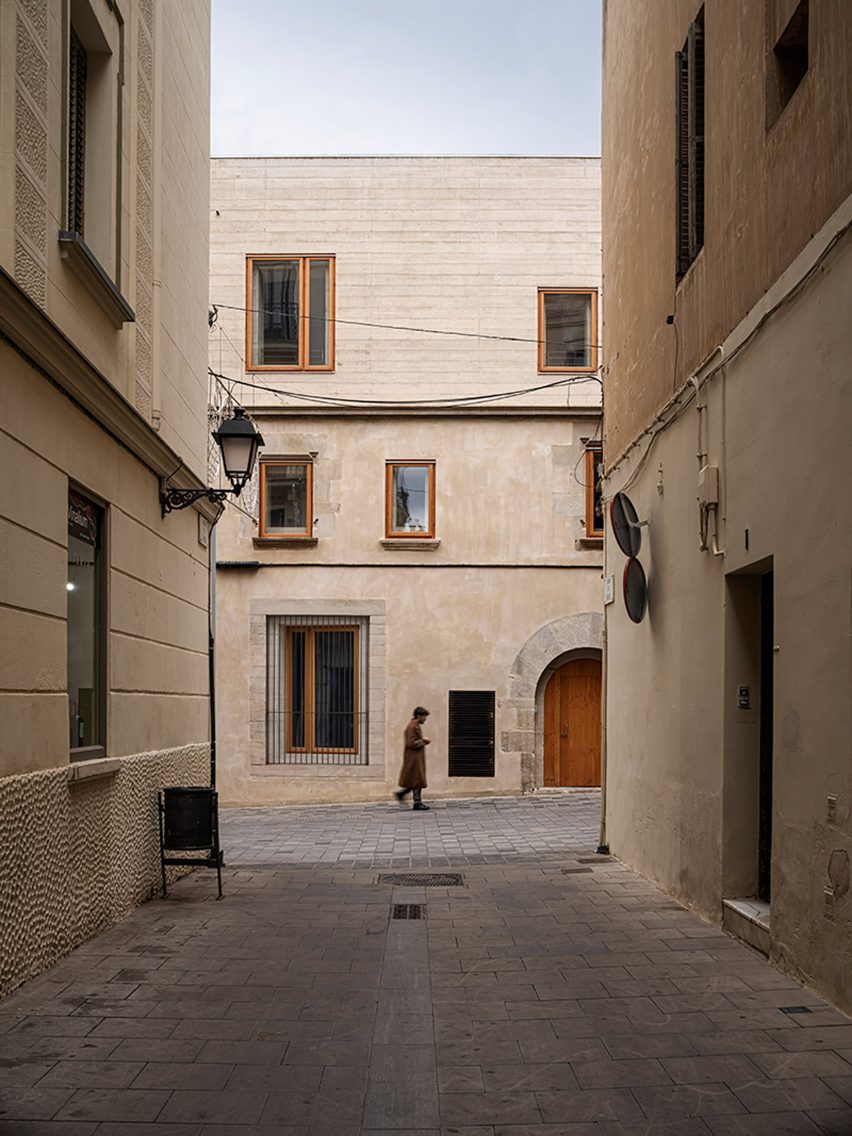
"The project begins with the challenge of qualifying the centre, prioritising it and turning it into the best place in the house," explained the studio.
"It is a wide plot that allows the possibility of recovering traditional typologies of interior patio or atrium, where the centre of the house becomes the best space in the house, the most representative and the one that indirectly qualifies the rest of the spaces that surround it," it continued.
The central atrium separates the more compartmentalised front of Casa 1736, which contains the bathrooms and bedrooms, from its open living and kitchen spaces at the rear.
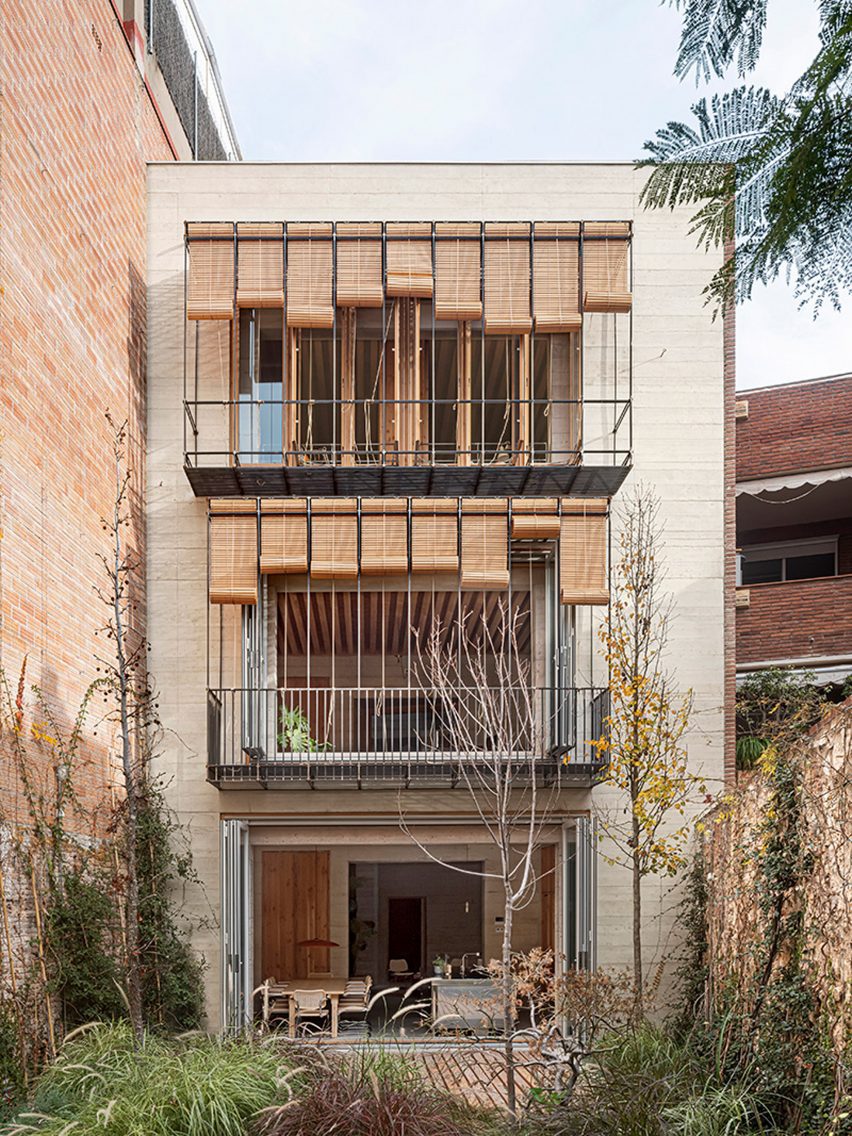
Almost half of the plot is occupied by a large walled garden at the back of the site, accessed via large folding doors in the kitchen that also help to ventilate the home.
Casa 1736's first-floor living room and additional bedrooms on the second floor overlook the garden from a steel-framed balcony, sheltered from the sun by rollable wooden blinds split into thin vertical strips.

"The hierarchy between rooms is used to absorb the strong irregularity of the plot and solve all the spaces in a regular and orthogonal way in the main pieces," explained H Arquitectes.
"The main pieces always maintain the same position and dimension on all floors, while the complementary pieces vary, adapting and occupying the interstitial and irregular space left between the main pieces," it added.
The structure of Casa 1736 was created using layers of poured concrete mixed with different sands and gravels, which achieves a finish reminiscent of rammed earth.
Exposed throughout, this layered and textured concrete is complemented by timber ceilings in the main spaces, as well as timber doors, window frames, furniture and storage.
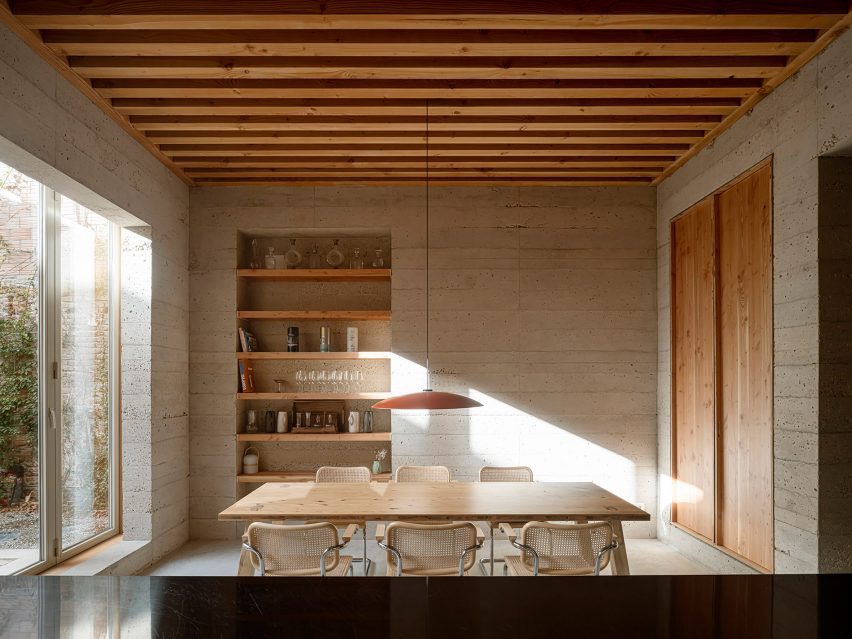
"[The concrete] is a very robust and monolithic solution with a lot of thermal inertia but at the same time porous enough to help regulate and stabilise the temperature, humidity and acoustics of the spaces," explained H Arquitectes.
"The ceilings of the main spaces are always as high as possible and made of wood in order to differentiate them as much as possible from the complementary spaces, which are entirely mineral spaces excavated within the walls," it added.
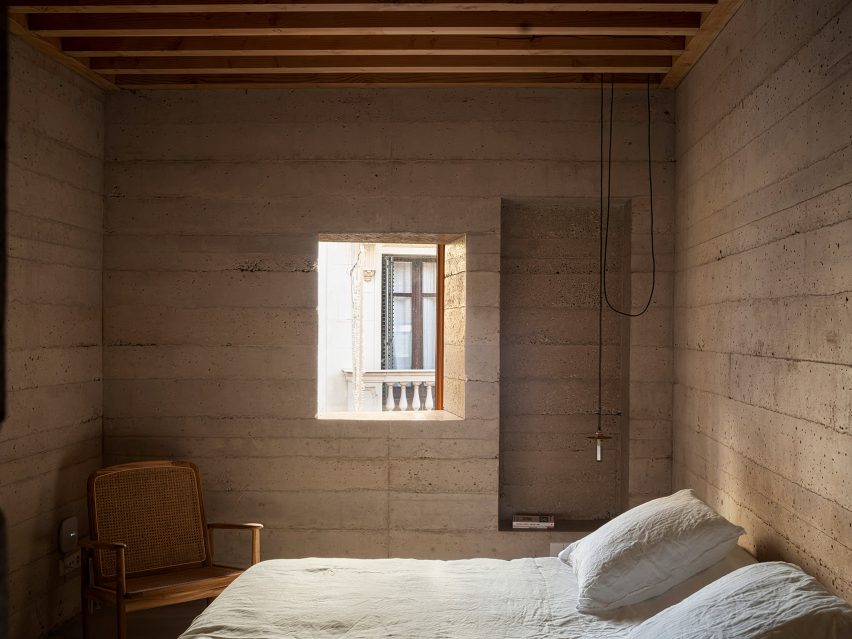
Based in Sabadell, H Arquitectes was founded in 2000 by David Lorente, Josep Ricart, Xavier Ros and Roger Tudó.
Previous projects by the studio include the extension of a 19th-century home in Barcelona and a house with a facade of sliding polycarbonate panels.
The photography is by Adrià Goula.